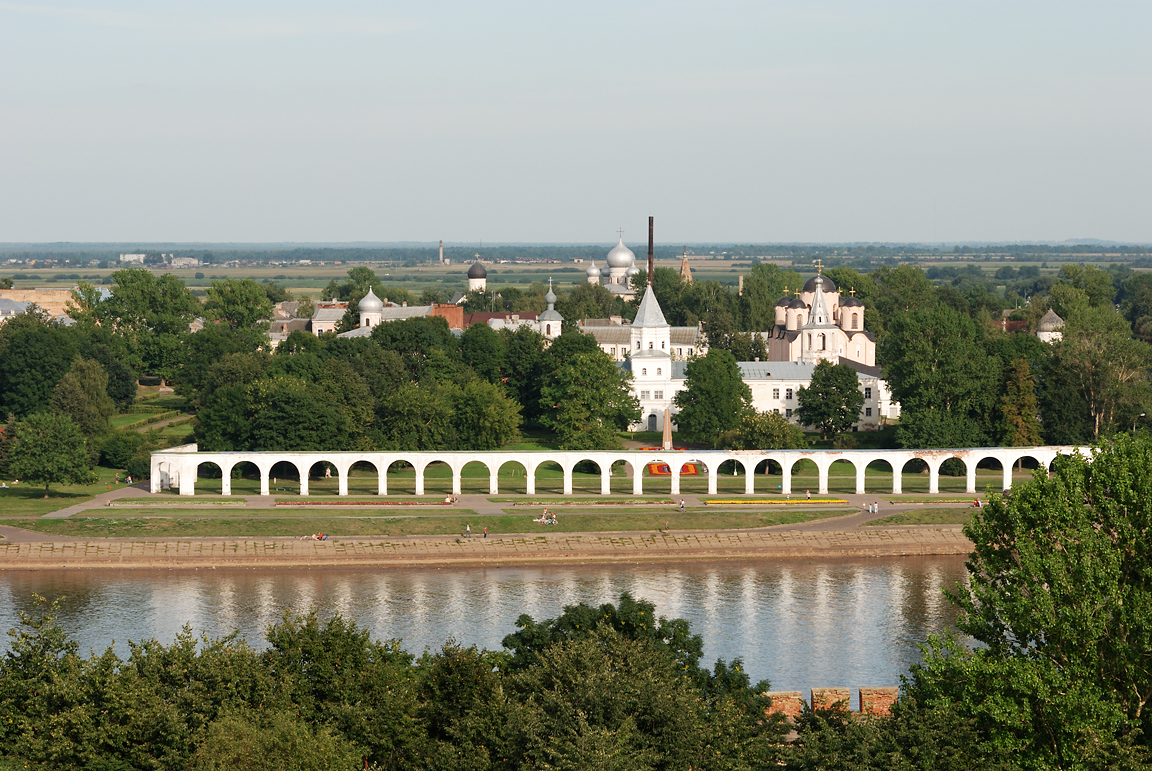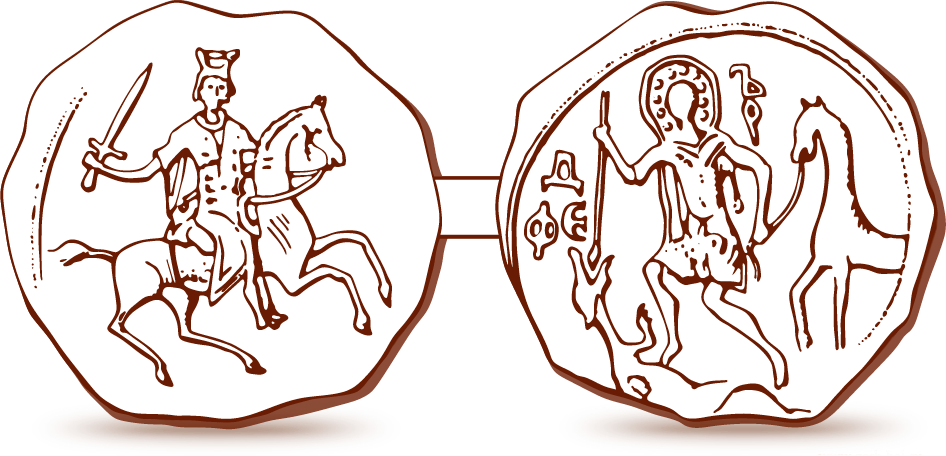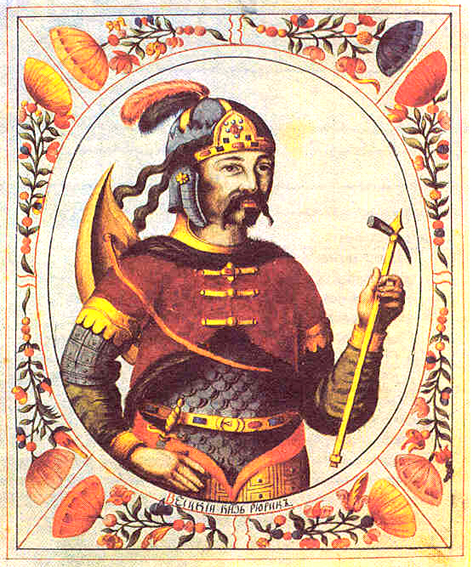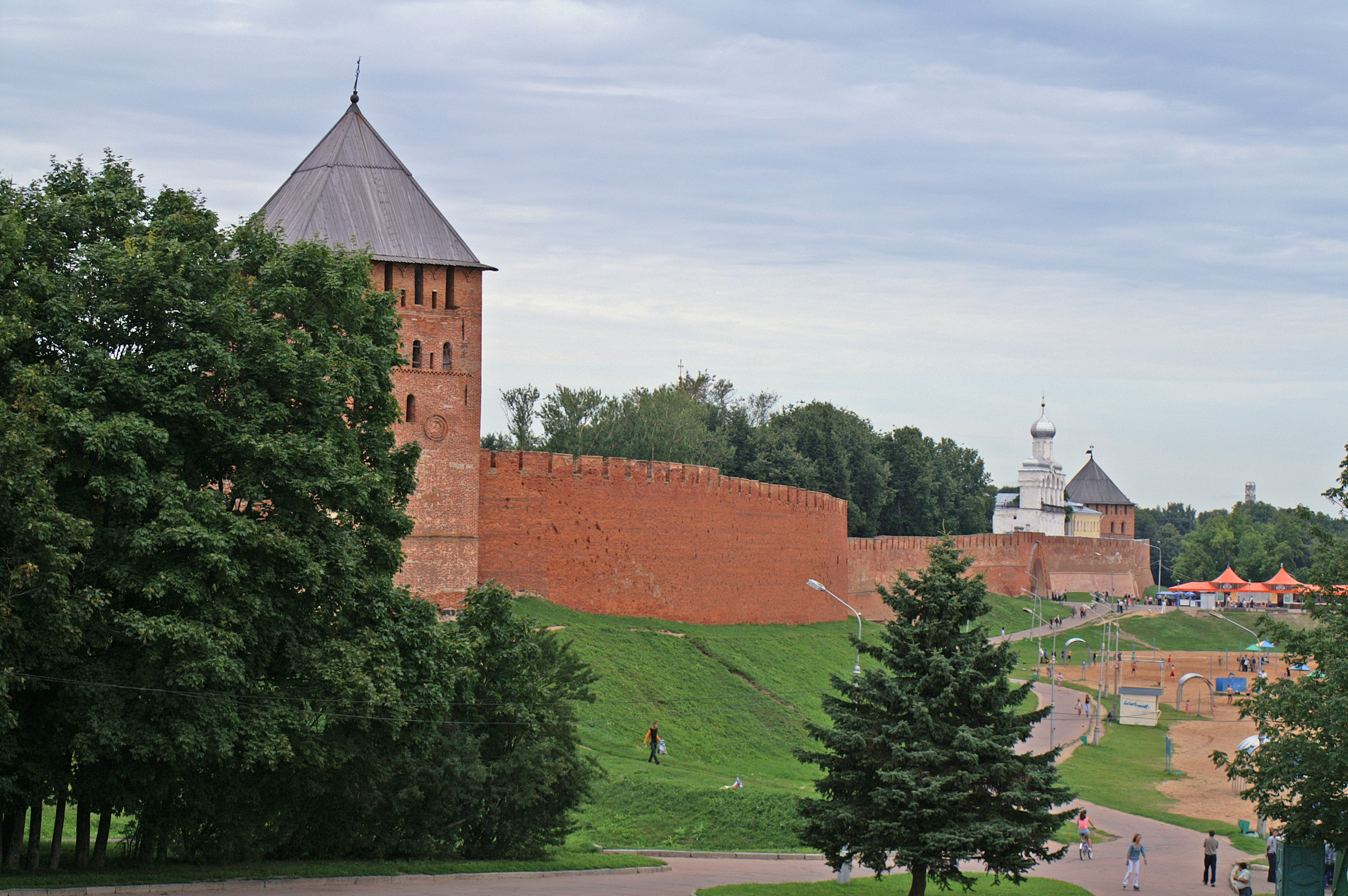|
Vsevolod Of Pskov
Vsevolod Mstislavich Monomakh (), the patron saint of the city of Pskov, ruled as Prince of Novgorod in 1117–32, Prince of Pereyaslavl (1132) and Prince of Pskov in 1137–38. Early life The eldest son of Mstislav the Great and Christina Ingesdotter of Sweden, Vsevolod was born in Novgorod during his father's reign as prince there (1088–1093, 1095–1117) and given the baptismal name Gabriel, or Gavriil. His maternal grandfather was King Inge the Elder of Sweden. The date of his birth is unknown, although the idea has been advanced that the event was commemorated by the Annunciation Church in the Marketplace, founded by Mstislav in 1103. He was enthroned as Prince of Novgorod after his father Mstislav Vladimirovich became Grand Prince of Kiev in 1117 and ruled Novgorod, with some interruption, until he was ousted by the Novgorodians in 1136. He was married to a Chernigovian princess in Novgorod in 1123 and his son, Ivan, was born there (he died in 1128). In 1123, Vs ... [...More Info...] [...Related Items...] OR: [Wikipedia] [Google] [Baidu] |
Yaropolk II Of Kiev
Yaropolk II Vladimirovich (1082 – 18 February 1139) was Prince of Pereyaslavl (1114–1132) and Grand Prince of Kiev (1132–1139). He was a son of Vladimir II Monomakh and Gytha of Wessex. He fought in several campaigns against the Cumans, once in 1103 and again in 1116. Reign After the death of his brother in 1132, Mstislav I the Great, Yaropolk received the crown of Kiev. Yaropolk had to deal with the many interests of his family, most of all his powerful half brother Yuri Dolgoruki. Yaropolk appointed Vsevolod Mstislavich to succeed him in Pereyaslavl but Yuri Dolgoruki, with the consent of the Novgorodians, soon drove out his nephew. Yaropolk appointed another son of Mstislav I: Iziaslav Mstislavich to Pereyaslavl, who also received Turov. He was replaced soon thereafter by Yaropolk's brother Viacheslav Vladimirovich. The peace did not last long and in 1134 the merry-go-round started once more. Iziaslav had to transfer Turov to his uncle Viacheslav to let him rule t ... [...More Info...] [...Related Items...] OR: [Wikipedia] [Google] [Baidu] |
Bolesław IV The Curly
Bolesław IV the Curly (; 1122 – 5 January 1173), a member of the Piast dynasty, was Duke of Masovia from 1138 and High Duke of Poland from 1146 until his death in 1173. Early life Bolesław was the third son of Duke Bolesław III Wrymouth of Poland by his second wife Salomea of Berg. The death of his older brothers, Leszek and Casimir, before 1131 and in October 1131, respectively, left him as the eldest son of their parents. Bolesław was 13 years old at the time of his father's death (1138) and of the legal age to take on the government of the lands he inherited according to his father's testament, the newly created Duchy of Masovia (composed of Masovia and eastern Kuyavia). In the first years of his government, young Bolesław remained under the strong influence of his mother and Voivode Wszebor, who feared the ambition of his elder half-brother High Duke Władysław II. Władysław II tried to restore the unity of the country and deposed the junior dukes. Fraternal ... [...More Info...] [...Related Items...] OR: [Wikipedia] [Google] [Baidu] |
Wierzchosława
Viacheslava of Novgorod (, ; c. 1125 – 15 March by 1162?), was a Kievan Rus' princess member of the Monomakhovichi and by marriage Duchess of Masovia and Kuyavia and List of Polish consorts, High Duchess of Poland since 1146. She was the daughter of Vsevolod of Pskov, St. Vsevolod, Prince of Novgorod and Pskov by his wife, a daughter of Svyatoslav Davidovich, Prince of Chernigov. Life Nothing is known about Viacheslava's first years; she was one of three children and their only daughter. She had two brothers, Ivan and Vladimir (who was confused in several sources as husband of Princess Richeza of Poland, Queen of Castile, Richeza of Poland). Both died unmarried and apparently childless. Around 1137 she was married to Bolesław IV the Curly, Bolesław, son of the Polish Duke Bolesław III Wrymouth. The wedding was probably orchestrated by Bolesław's mother Salomea of Berg, who wanted to secure a Russian alliance against her stepson, the later Władysław II the Exile. On 11 Fe ... [...More Info...] [...Related Items...] OR: [Wikipedia] [Google] [Baidu] |
Yaroslav's Court
Yaroslav's Court (, ''Yaroslavovo Dvorishche'') was the princely compound in the city of Novgorod the Great. Today it is roughly the area around the Trade Mart, the St. Nicholas Cathedral, the Church of St. Procopius, and the Church of the Myrrh-bearing Women. The Trade Mart renovated and heavily modified in the sixteenth and seventeenth centuries, is all that is left of the princely palace itself. The prince also had a compound called the Riurik's Court (''Riurikovo Gorodishche'') south of the marketside of the city. Yaroslav's Court is named after Yaroslav the Wise who, while prince of Novgorod in 988–1015, built a palace there. The Novgorodian veche A ''veche'' was a popular assembly during the Middle Ages. The ''veche'' is mentioned during the times of Kievan Rus' and it later became a powerful institution in Russian cities such as Veliky Novgorod, Novgorod and Pskov, where the ''veche'' a ... often met in front of Yaroslav's Court and in 1224 several pagan sorcerers w ... [...More Info...] [...Related Items...] OR: [Wikipedia] [Google] [Baidu] |
Guild
A guild ( ) is an association of artisans and merchants who oversee the practice of their craft/trade in a particular territory. The earliest types of guild formed as organizations of tradespeople belonging to a professional association. They sometimes depended on grants of letters patent from a monarch or other ruler to enforce the flow of trade to their self-employed members, and to retain ownership of tools and the supply of materials, but most were regulated by the local government. Guild members found guilty of cheating the public would be fined or banned from the guild. A lasting legacy of traditional guilds are the guildhalls constructed and used as guild meeting-places. Typically the key "privilege" was that only guild members were allowed to sell their goods or practice their skill within the city. There might be controls on minimum or maximum prices, hours of trading, numbers of apprentices, and many other things. Critics argued that these rules reduced Free market, fre ... [...More Info...] [...Related Items...] OR: [Wikipedia] [Google] [Baidu] |
Ivan's Hundred
Ivan's Hundred () was an association of merchants which existed in the 12th–15th centuries in the Novgorod Republic. The association gathered around the Church of St. John the Forerunner () in Novgorod and consisted of merchants who traded wax wholesale. The ''starostas'' (heads) of the Ivan's Hundred were permanent members of the Commerce Court of Novgorod and ruling Council of the Novgorod Republic. They also took part in signing trade agreements. The rights and responsibilities of the members of the Ivan's Hundred were stated in the so-called ''Charter'' (Устав) and ''Manuscript'' (Рукописание) of the prince Vsevolod Mstislavich. Each member had to pay an entrance fee of 50 grivnas of silver and additionally to give a bolt of Ypres Ypres ( ; ; ; ; ) is a Belgian city and municipality in the province of West Flanders. Though the Dutch name is the official one, the city's French name is most commonly used in English. The municipality comprises the ... [...More Info...] [...Related Items...] OR: [Wikipedia] [Google] [Baidu] |
Yuriev Monastery
The St. George's (Yuriev) Monastery () is usually cited as Russia's oldest monastery. It stands in 5 kilometers south of Novgorod on the left bank of the Volkhov River near where it flows out of Lake Ilmen. The monastery used to be the most important in the medieval Novgorod Republic. It is part of the World Heritage Site named ''Historic Monuments of Novgorod and Surroundings''. History According to legend, the monastery of wood was founded around the year 1030 by Yaroslav the Wise whose baptismal name was George (, ) after Saint George. The first historically reliable reference to it is from the early 12th century when the stone building of the main church (the Church of St. George, Georgieveskii Church) was started in 1119 by Prince Vsevolod of Pskov, Vsevolod Mstislavich of Novgorod and Pskov and Hegumen (roughly equivalent to a western prior) Kyuriak (Kirik) and built by the master Peter. By the first third of the 13th century the hegumen had been raised to the status of an ... [...More Info...] [...Related Items...] OR: [Wikipedia] [Google] [Baidu] |
Aleksandr Nevsky
Alexander Yaroslavich Nevsky (; ; monastic name: ''Aleksiy''; 13 May 1221 – 14 November 1263) was Prince of Novgorod (1236–1240; 1241–1256; 1258–1259), Grand Prince of Kiev (1249–1263), and Grand Prince of Vladimir (1252–1263). Commonly regarded as a key figure in medieval Russian history, Alexander was a grandson of Vsevolod the Big Nest and rose to legendary status on account of his military victories in northwestern Russia over Swedish invaders in the 1240 Battle of the Neva, as well as German crusaders in the 1242 Battle on the Ice. He preserved Eastern Orthodox Church, Eastern Orthodoxy, agreeing to pay tribute to the powerful Golden Horde. Metropolitan Macarius, Metropolitan of Moscow, Macarius of Moscow canonized Alexander Nevsky as a saint of the Russian Orthodox Church in 1547. Early life Born in Pereslavl-Zalessky around the year 1220, Alexander was the second son of Prince Yaroslav II of Vladimir, Yaroslav Vsevolodovich. His mother was , daughter of Msti ... [...More Info...] [...Related Items...] OR: [Wikipedia] [Google] [Baidu] |
Princes Of Novgorod
The Prince of Novgorod () was the title of the ruler of Novgorod in present-day Russia. From 1136, it was the title of the figurehead leader of the Novgorod Republic. The position was originally an appointed one until the late 11th or early 12th century, then became something of an elective one until the early 14th century, after which the grand prince of Vladimir (who was almost always the prince of Moscow) was almost invariably the prince of Novgorod as well. The title originates sometime in the 9th century when, according to tradition, the Varangian chieftain Rurik and his brothers were invited to rule over the East Slavic and Finnic tribes of northwest Russia, but reliable information about it dates only to the late 10th century when Vladimir, the youngest son of Sviatoslav I, was made the prince of Novgorod. During the reign of Ivan III, the title was restored and Novgorod was included in the title of the Russian monarch, which lasted until the abdication of Ni ... [...More Info...] [...Related Items...] OR: [Wikipedia] [Google] [Baidu] |
Republic Of Novgorod
The Novgorod Republic () was a medieval state that existed from the 12th to 15th centuries in Russian North, northern Russia, stretching from the Gulf of Finland in the west to the northern Ural Mountains in the east. Its capital was the city of Veliky Novgorod, Novgorod. The republic prospered as the easternmost trading post of the Hanseatic League, and its people were much influenced by the culture of the Byzantine Empire, Byzantines, with the Novgorod school of Russian icons, icon painting producing many fine works. Novgorod won its independence in 1136 after the Novgorodians deposed their Prince of Novgorod, prince and the Novgorod veche, Novgorod ''veche'' began to elect and dismiss princes at its own will. The ''veche'' also elected the ''posadnik'', who was the chief executive of the city, and the Diocese of Novgorod, archbishop of Novgorod, subject to approval by the Russian Orthodox Church, Russian metropolitan. The ''tysyatsky'' was also elected by the ''veche'', who was ... [...More Info...] [...Related Items...] OR: [Wikipedia] [Google] [Baidu] |
The Detinets
The Novgorod Detinets (), also known as the Novgorod Kremlin (), is a fortified complex ( detinets) in Veliky Novgorod, Russia. It stands on the left bank of the Volkhov River about two miles north of where it empties out of Lake Ilmen. History The compound was originally the site of a pagan burial ground upon which the first bishop of Novgorod, Ioakim Korsunianin, built the Cathedral of Holy Wisdom upon his arrival in the area in 989 or so. Thus the compound was and remained largely an ecclesiastical site, although many Novgorodian boyars built their houses in the southern part of the Detinets. The first reference of the fortification on the site dates to 1044, with additional construction taking place in 1116. These were probably earthen embankments topped by a wooden palisade, although stone towers and walls were built in 1302. Archbishop Vasily Kalika (1330–1352) rebuilt the stone wall along the eastern side of the Detinets in 1331–1335. The rest was completed in ston ... [...More Info...] [...Related Items...] OR: [Wikipedia] [Google] [Baidu] |






